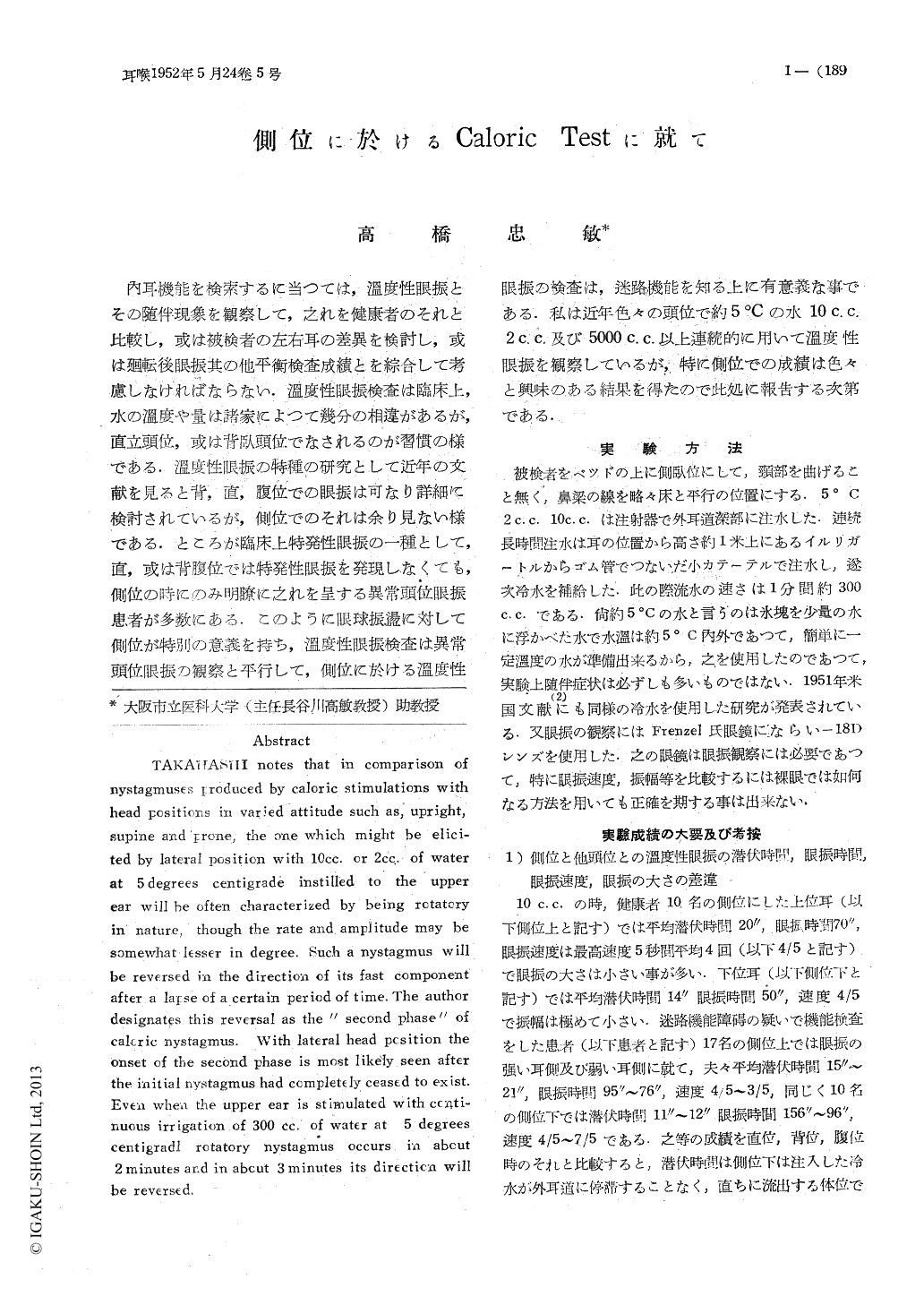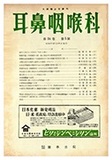- 有料閲覧
- 文献概要
- 1ページ目
内耳機能を検索するに当つては,温度性眼振とその随伴現象を観察して,之れを健康者のそれと比較し,或は被検者の左右耳の差異を検討し,或は廻転後眼振其の他平衡検査成績とを綜合して考慮しなければならない.温度性眼振検査は臨床上,水の温度や量は諸家によつて幾分の相違があるが,直立頭位,或は背臥頭位でなされるのが習慣の樣である.温度性眼振の特種の研究として近年の文献を見ると背,直,腹位での眼振は可なり詳細に検討されているが,側位でのそれは余り見ない樣である.ところが臨床上特発性眼振の一種として,直,或は背腹位では特発性眼振を発現しなくても,側位の時にのみ明瞭に之れを呈する異常頭位眼振患者が多数にある.このように眼球振盪に対して側位が特別の意義を持ち,温度性眼振検査は異常頭位眼振の観察と平行して,側位に於ける温度性眼振の検査は,迷路機能を知る上に有意義な事である.私は近年色々の頭位で約5℃の水10c.c.2c.c.及び5000c.c.以上連続的に用いて温度性眼振を観察しているが,特に側位での成績は色々と興味のある結果を得たので此処に報告する次第である.
TAKAHASHI notes that in comparison of nystagmuses produced by caloric stimulations with head positions in varied attitude such as, upright, supine and prone, the one which might be elici-ted by lateral position with 10cc. or 2cc. of water at 5 degrees centigrade instilled to the upper ear will he often characterized by being rotatory in nature, though the rate and amplitude may be somewhat lesser in degree. Such a nystagmus will be reversed in the direction of its fast component after a lapse of a certain period of time. The author designates this reversal as the "second phase" of caloric nystagmus. With lateral head pcsition the onset of the second phase is most likely seen after the initial nystagmus had completely ceased to exist.Even when the upper ear is stimulated with conti-nuous irrigation of 300cc. of water at 5 degrees centigradl rotatory nystagmus occurs in about 2 minutes and in about 3 minutes its direction will be reversed.

Copyright © 1952, Igaku-Shoin Ltd. All rights reserved.


